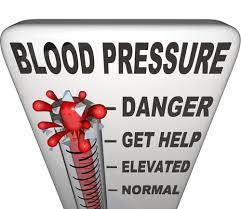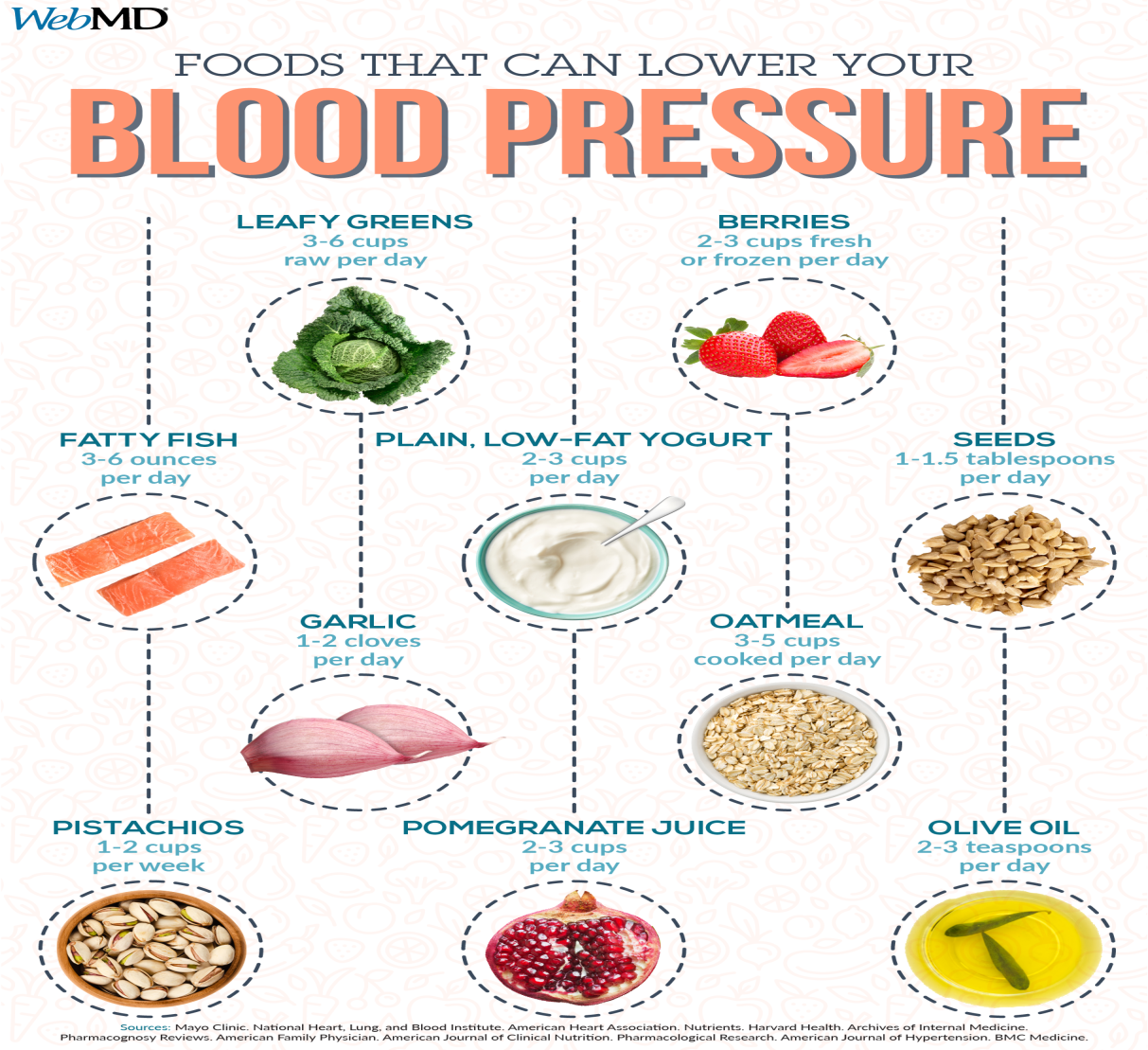 ATC
ATC
HIGH BLOOD PRESSURES DO’s AND DON’Ts
High blood pressure is one of the most over-looked health problems. Of the millions who know they have it, very few are getting adequate treatment, less than a quarter of the estimated millions who have it are getting adequate treatment. The rest may feel fine, but they're at in-creased risk for stroke, heart attack, kidney failure and other ailments.
A single measurement may not be representative of your blood pressure throughout the day. And about one in five people who visit the doctor exhibit high blood pressure simply because they're nervous. To tell if your blood pressure is consistently high, you must take several readings — preferably over a period of days or weeks.

NEW 2017 CLASSIFICATION OF BLOOD PRESSURE
Normal below …………….120/80mm Hg
Elevated ............................ 120/80 to 129/89mm Hg
Stage 1 hypertension ..........130/80 to 139/89mm Hg
Hypertesion Crisis …………180/120 Hg and above
TABLE 1. CLASSIFICATION OF BLOOD PRESSURE (BP)
Normal |
<120mmHg |
and |
<80mmHg |
Evaluate yearly; encourage healthy lifestyle changes to maintain normal BP |
Elevated |
120- 129mmHg |
and |
<80mmHg |
Recommend healthy lifestyle changes and reassess in 3-6 months |
Hypertension: stage1 |
130- 139mmHg |
or |
80-89mmHg |
The doctor should Assess the 10-year risk for heart disease and stroke and recommend appropriate follow up treatment Continue monthly follow-up until control is achieved |
Hypertension: stage 2 |
≥140mmHg |
or |
≥90mmHg |
Recommend healthy lifestyle changes and BP-lowering medication (2 medications of different classes); reassess in 1 month for effectiveness
Continue monthly follow-up until control is achieved |
TABLE 2. HYPERTENSIVE CRISES: EMERGENCIES AND URGENCIES
|
|
|
|
|
Hypertensive urgency |
>180mm Hg |
and/ or |
>120mm Hg |
Many of these patients are noncompliant with antihypertensive therapy. |
Hypertensive emergency |
>180mmHg + target organ damage |
and/ or |
>120mm Hg +target organ damage |
Admit patient to an intensive care unit for continuous monitoring of BP |
PREVIOUS CLASSIFICATION OF BLOOD PRESSURE
Normal.............................120/80mm Hg and below
Pre-hypertension..........120/80mm Hg to 130/89mm Hg
Stage1hypertension...140/90mm Hg to 159/99mm Hg
Stage 2 hypertension...160/100mm Hg above.
TO LOWER BLOOD PRESSURE
Cut back on alcohol. Excessive consumption of Alcohol could raise blood pressure. Have no more than one ounce a day—the amount in two beers, a glass of wine or a jigger of whiskey.
Exercise more. Get 30 to 60 minutes everyday of moderate activity— walking, jogging, bicycling, etc. Becoming fit can lower your blood pressure by six to seven points.
Lose weight. Overweight people who reduce their body weight by 5% to 10% often experience a significant drop in blood pressure.
Quit smoking.
Reduce sodium intake. Some people are salt-sensitive, others aren't. My advice is to stop using a saltshaker... and to avoid processed foods, which account for two-thirds of daily salt intake
Tips to cut back on sodium
You
can also reduce sodium further by:
Using sodium-free seasoning blends or herbs, spices or flavorings with your food instead of salt. It can take several weeks for your taste buds to get used to less salty foods.
Not adding salt when cooking rice, pasta or hot cereal – One teaspoon of table salt has 2,325 mg of sodium. When you read food labels, you may be surprised at just how much sodium some processed foods contain.
Rinsing canned foods to remove some of the sodium – Even low-fat soups, canned vegetables, ready-to-eat cereals and sliced turkey from the local deli — foods you may have considered healthy — often have lots of sodium.
Buying foods labeled "no salt added," "sodium-free," "low sodium" or "very low sodium".
Follow the DASH diet - Dietary Approaches to Stop Hypertension (DASH)
Seven or eight servings of grains, bread, cereal or pasta preferably whole-grain varieties.
8 to10 servings of fruits and vegetables.
Two or three servings of nonfat/low-fat dairy products.
Two or fewer servings of meat, poultry or fish.
The DASH diet also calls for four or five servings per week of beans, peas, nuts or seeds.
The DASH diet emphasizes fruits, vegetables, and low-fat dairy, but meat is still present —you’re just supposed to eat less of it. Why not recommend an even more plant-based diet?
Food
of animal origin was highly significantly associated with systolic
and diastolic Blood Pressure after the age and weight effects were
removed.” That’s a quote from a series of studies performed by
renowned physician Frank Sacks and colleagues back in the 1970s, but
there are studies going all the way back to the 1920s demonstrating
that adding meat to a plant-based diet can significantly elevate
blood pressure in a matter of days.
Low-sodium diet centered on whole plant foods appears to be the best way to bring down high blood pressure.
What
if you’re already eating this way but that 110/ 70 still eludes
you? There are a few foods in particular you can try that may offer
additional protection; like whole grains, flaxseeds, hibiscus tea,
and nitrate-rich vegetables. Ground flaxseeds alone “induced one of
the most potent blood-pressure-lowering effects ever achieved by a
dietary intervention.” Eating just a few tablespoons a day appears
to be two to three times more powerful than adopting an aerobic
endurance exercise program (not that you shouldn’t do
both—incorporate flaxseeds into your diet and exercise).
Consumption
of both raw and cooked vegetables is associated with lower blood
pressure, but raw veggies may be slightly more protective. Studies
have also found that loading up on beans, split peas, chickpeas, and
lentils may help a little, so add those to your shopping list. Red
wine may help, but only nonalcoholic brands. Only wine that has had
the alcohol removed appears to lower blood pressure. Watermelon
appears to offer protection, which is great (and delicious) news, but
you may have to eat about two pounds of it per day to achieve an
effect.
Putting the Pieces Of The DASH Diet Together
Try these strategies to get started on the DASH diet:
Change gradually. If you now eat only one or two servings of fruits or vegetables a day, try to add a serving at lunch and one at dinner. Rather than switching to all whole grains, start by making one or two of your grain serving whole grains. Increasing fruits, vegetables and whole grains gradually can also help prevent bloating or diarrhea that may occur if you aren't used to eating a diet with lots of fiber.
Reward successes and forgive slip-ups. Reward yourself with a nonfood treat for your accomplishments — go to the movies, purchase a book or get together with a friend. Everyone slips, especially when learning something new. Remember that changing your lifestyle is a long-term process. Find out what triggered your setback and then just pick up where you left off with the DASH diet.
Get support if you need it. If you're having trouble sticking to your diet, talk to your doctor or dietitian about it. You might get some tips that will help you stick to the DASH diet.
Remember, healthy eating isn't an all-or-nothing proposition. What's most important is that, on average, you eat healthier foods with plenty of variety — both to keep your diet nutritious and to avoid boredom or extremes. And with the DASH diet, you can have both.
Cut back on caffeine and nicotine. The caffeine in coffee, tea and soft drinks causes blood vessels to narrow for several hours, causing a transient rise in blood pressure. People with hypertension should limit their daily caffeine intake to two cups of coffee, four cups of tea or four cans of caffeinated soda.
Limit your drinking. Excessive drinking—more than two drinks a day for men or one for women—is clearly a major contributor to hyper-tension. If your drinking exceeds these levels, cut back. Do so gradually, over a few weeks. Going "cold turkey" can cause a rapid and potentially dangerous rise in blood pressure.
Lose weight. The heavier you are, the larger the network of blood vessels your body must maintain. The larger this network, the more forcefully your heart must pump. If you're over-weight, losing even 10 pounds is often enough to lower your blood pressure one full level on the six-part scale.
Besides shedding pounds, you generally should also keep an eye on your waistline. Carrying too much weight around your waist can put you at greater risk of high blood pressure.
In general:
Men are at risk if their waist measurement is greater than 40 inches (102 centimeters).
Women are at risk if their waist measurement is greater than 35 inches (89 centimeters).
Alleviate psychological stress. Stress causes the body to produce hormones that constrict blood vessels, thereby raising your blood pressure. Get organized... make lists of tasks... set priorities... clean out clutter... say "no" to additional responsibilities... delegate work... try meditation and other relaxation techniques.
Get more physical activity. Walking, cycling, running and other forms of aerobic exercise boost your heart's pumping efficiency. The more efficient your heart, the wider the arteries open and the less forcefully the heart must contract. Bonus: Regular exercise helps alleviate stress and promotes weight loss — there by augmenting its pressure-lowering effect. Aim for five to seven 30 minute workout sessions weekly. Experts recommend at least 20 minutes of running, biking, walking, etc. at least four days a week.
Read labels. A bowl of indomie noodles can have more than 1,140 milligrams (mg) of sodium. That's half the 2,400-mg-per-day level recommended by health experts.

5 COMMON MISTAKES
Thinking that cutting back on salt will do the trick. Only about half of all hypertensives are salt-sensitive. Their pressure drops if they cut back on salt and other sources of sodium. For the other 50%, avoiding salt makes no difference. To find out if your blood pressure is affected by salt, avoid salt altogether for four weeks and see if there's any change.
Not exercising properly. After vigorous exercise, blood pressure stays low for hours. Getting into shape will permanently reduce your blood pressure and your risk of heart disease.
Using an unreliable blood pressure monitor. Many monitors designed for home use are unreliable. Before using your monitor, have your doctor calibrate it and check your technique, too.
Ignoring potassium. Potassium lowers blood pressure. Potassium-rich foods include bananas, oranges, beans, squash and sunflower seeds.
Ignoring the effects of other drugs. Blood pressure can be raised by many prescription and over-the-counter drugs e.g. Flu medication, decongestant (found in many cold and allergy pills) and nonsteroidal anti-inflammatory drugs (NSAIDs) like ibuprofen or Advil.
Quick Tips for a Healthful Diet
Exchanging soft drinks for herbal teas is a positive change in a person's diet.
There
are plenty of small, positive ways to improve the diet, including:
Swapping soft drinks for water and herbal tea
Eating no meat for at least 1 day a week
Ensuring that produce makes up about 50 percent of each meal
Swapping cow's milk for plant-based milk
Eating whole fruits instead of drinking juices, which contain less fiber and often include added sugar, avoiding processed meats, which are high in salt and may increase the risk of colon cancer, eating more lean protein, which can be found in eggs, fish, and nuts.
